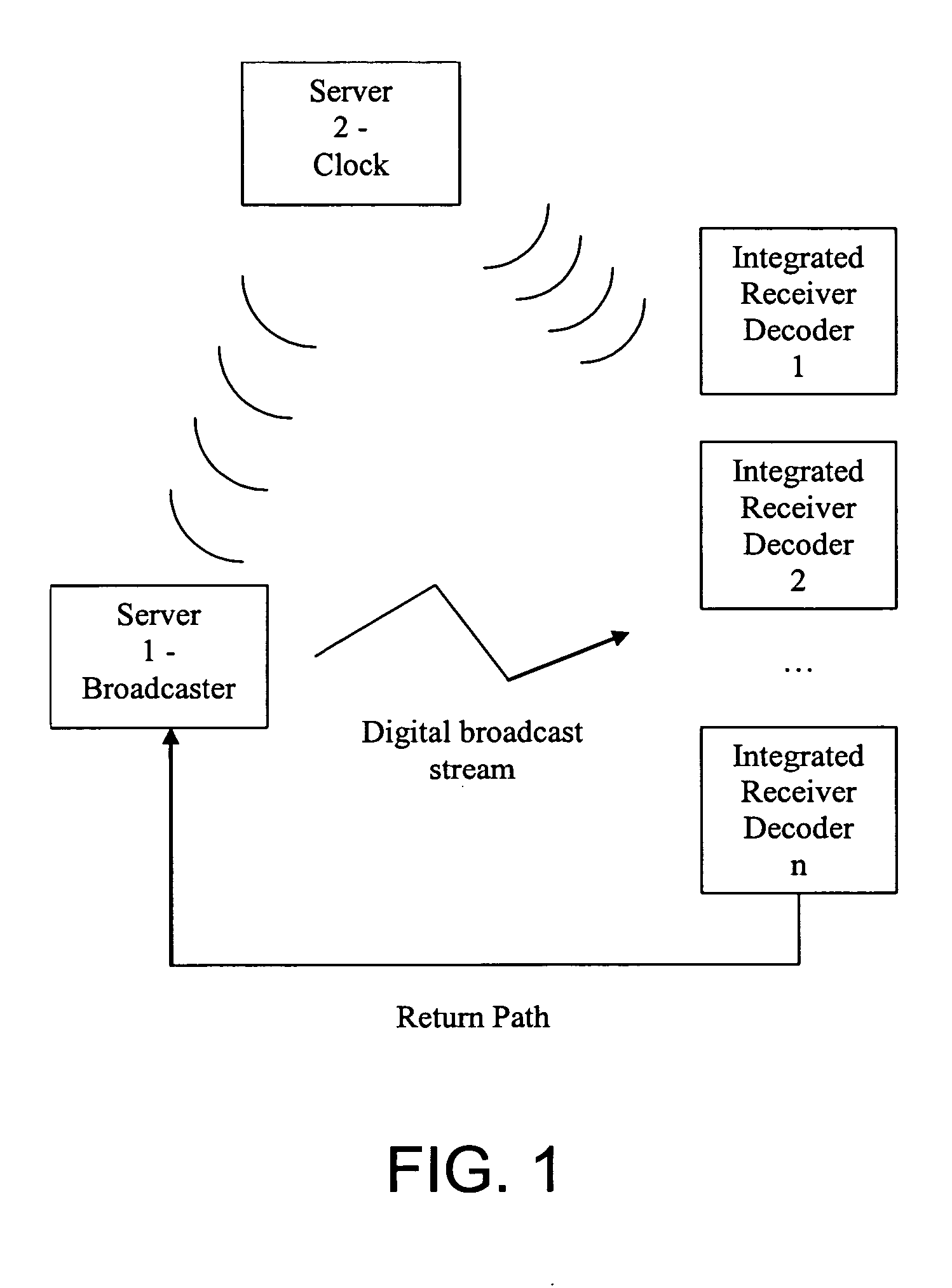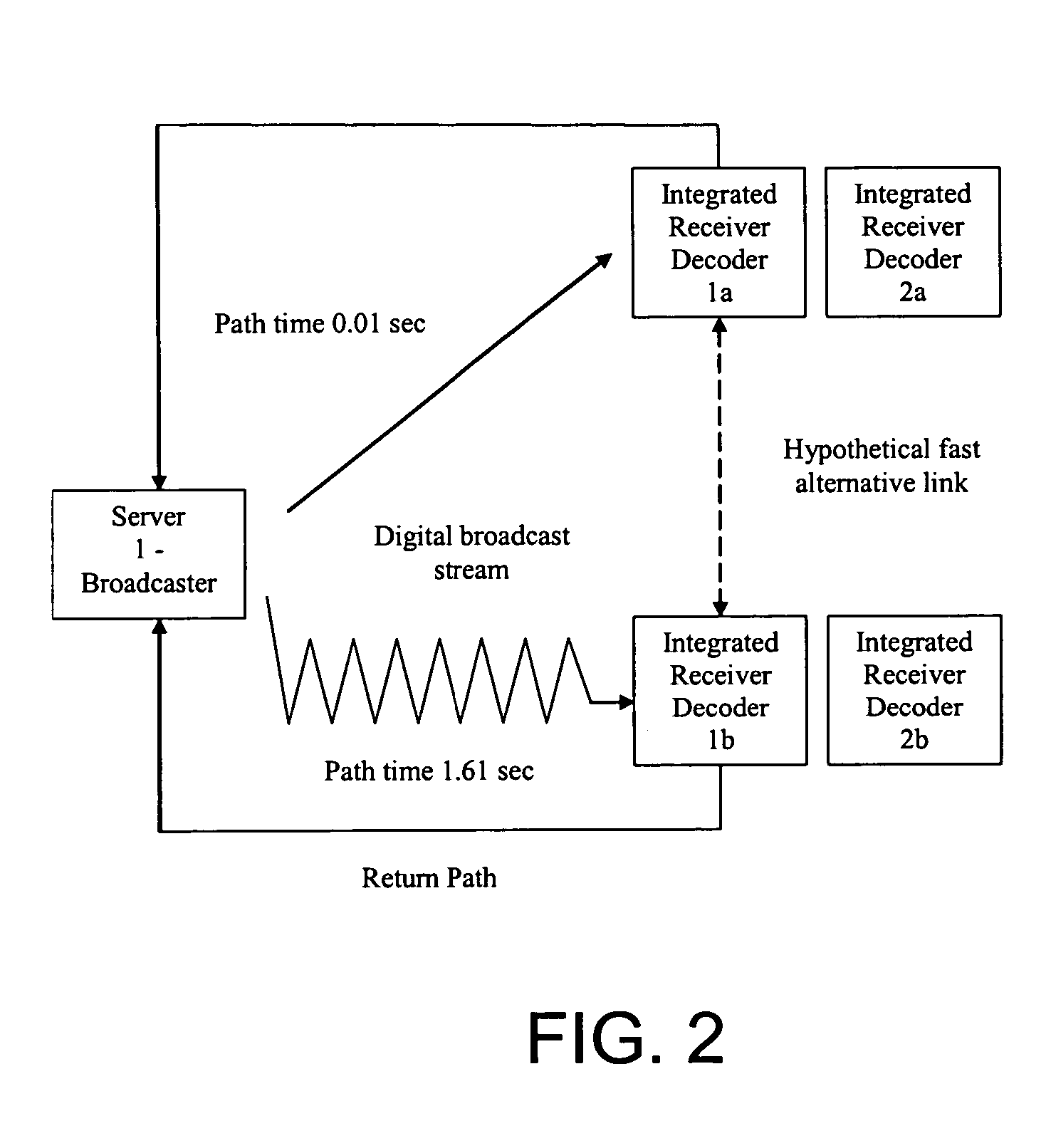System and methods for synchronizing the operation of multiple remote receivers in a broadcast environment
a broadcast environment and remote receiver technology, applied in the field of synchronization of behavior and operation among a group of distant receivers, can solve problems such as cheating the system, unsatisfactory alteration of these streams, and grossly different delays
- Summary
- Abstract
- Description
- Claims
- Application Information
AI Technical Summary
Benefits of technology
Problems solved by technology
Method used
Image
Examples
Embodiment Construction
[0046] The following example uses for illustrative purposes content related to an interactive game show. The broadcast content is the trivia game show. The interactive "event data" content is an application which allows a television viewer sitting at home to select from a plurality of displayed answers using a remote control in synchronicity with the time at which a question is asked of the actual studio players within the broadcast content.
[0047] The questions of the game show are scripted in advance of taping. Once the tape is edited to fit within a broadcast window (exclusive of commercials), the content provider or some other manual or automated service would review the tape and identify absolute timing portions within the tape at which questions are asked. The reviewer might find, for instance, that the first question with four possible answers to choose from is asked at 00:04:05 into the tape and that the player is given until 00:04:35 in which to respond. An application, or e...
PUM
 Login to View More
Login to View More Abstract
Description
Claims
Application Information
 Login to View More
Login to View More - R&D
- Intellectual Property
- Life Sciences
- Materials
- Tech Scout
- Unparalleled Data Quality
- Higher Quality Content
- 60% Fewer Hallucinations
Browse by: Latest US Patents, China's latest patents, Technical Efficacy Thesaurus, Application Domain, Technology Topic, Popular Technical Reports.
© 2025 PatSnap. All rights reserved.Legal|Privacy policy|Modern Slavery Act Transparency Statement|Sitemap|About US| Contact US: help@patsnap.com



